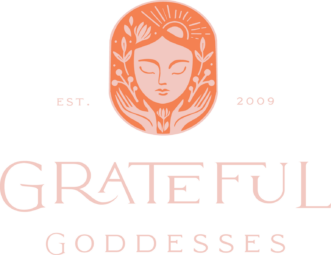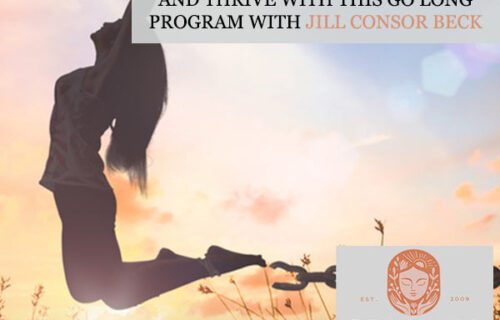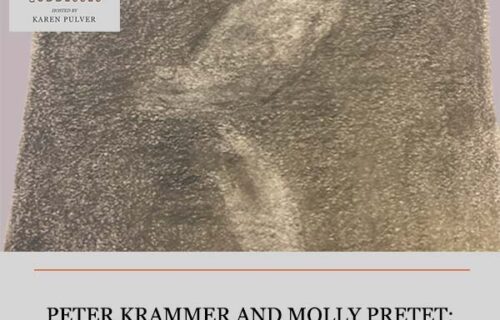
Sadie Morgan: Connections With Others Through Architecture
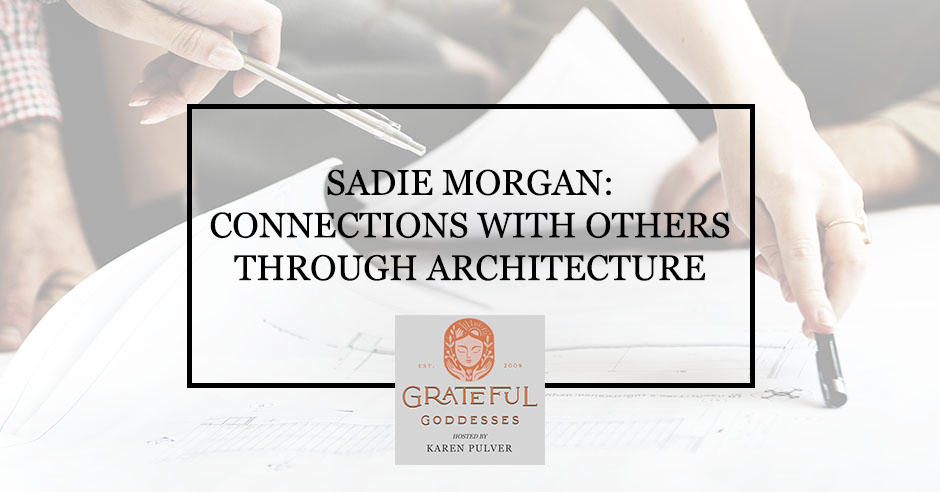
You can establish connections with others through architecture. When buildings are designed in a special way, they can have a soul. A timely topic in this isolating time, join Karen Pulver and the Goddesses as they sit down with Architect Sadie Morgan, the Founding Director of Stirling Prize-winning architecture practice dRMM. Here, Sadie shows us how architecture affects people rather than the building itself, especially when we allow spaces to have connections with people. In addition, Sadie teaches us the importance of positivity through her cancer struggle, sharing her resilience and approaching life with love. Join this jam-packed episode full of inspiring wisdom, one that we really need in this trying time. See buildings as more than just constructed concrete and more with Sadie, Karen, and the Goddesses.
—
Watch the episode here
Listen to the podcast here
Sadie Morgan: Connections With Others Through Architecture
Buildings Have Soul
Thank you all for joining us on Grateful Goddesses. We’ve been in quarantine for a while now. What’s nice about this quarantine is we have gotten to see our home and our spaces a little better. We’ve gotten to know them better. One thing I know for sure that I’m missing is the connection, connection to people, to the environment, and to the world, besides my television. Our guest is Sadie Morgan. What she does is combining infrastructure and housing that allows for better public connectivity and happier residents, which adds to the quality of life. All of her buildings have a soul.
What I love about Sadie is not just because she’s a dear friend but she loves life. We have so much fun when we see her. She does tap into the human soul in her work. She doesn’t design a building because that’s what she’s commissioned to do but she does look at the relationships of the people and what will help them with their morale to help them feel better about where they live. Also, how they’re living. We’re going to talk to her. Sadie, welcome to Grateful Goddesses.
Thank you. A pleasure to be here. I’m very honored.
We’re very honored to have you. I have to talk about the story of when my husband and I came to London and we met you. We got on our bicycles. You were smiling and I said, “It’s going to rain.” You said, “No. It’s fine. Let’s go.” Meantime, I’m riding on the opposite side of the road, confused. You knew the city like the back of your hand. We were going zigzag. It then started to downpour. You said, “We could stop somewhere.” We stopped at a hotel and we had some champagne. I remember worrying about my hair getting frizzy when you have the blowout before you go away and we’re drenched. You were happy and smiling. I loved your laugh. Your attitude was positive. Your motto in life is, “I’ll be okay as long as I enjoy what I do and I’m passionate about it.” Can you tell us a little bit more about that?
You get to a certain point in your life and you’ve tried hard. When you study architecture, it takes a long time. As an architect, it’s competitive. It’s like many different professions but it’s a competitive profession. There aren’t many women in it. It takes a lot of energy and effort to get anything built and to do anything. I’m naturally hard on myself. I got to this point when I thought, “All that matters is that I enjoy what I do.” If I enjoy what I do, it comes out in the buildings. I talked about this before.
If you’re happy and you’re positive and you love what you do, you create things that have that energy. I’m proud that the buildings that we make feel joyful. You look at them and you think, “There’s a positive energy about them.” I’m not great at everything and I’m certainly terrible at a lot of things. There are things that I am good at and I should celebrate those. If I’m happy about doing them, that comes out in my work.
If I remember correctly, you don’t love to cook.
It’s not one of my strong points. Luckily, I have a lovely partner who’s incredibly good at cooking.
Can you tell us a little bit more about your journey to where you are now? Did you have this passion for becoming an architect when you were younger? How did it transform over the years?
The truth is no. I didn’t know what I wanted to do. First of all, I want to be an actress. I wanted to become a doctor. All of my family are medics. The exams that I took were all geared towards becoming a medic. To cut a long story short, I ended up going to do an art foundation course. I needed a year before I could end up doing something else. I did this art foundation and I loved it. I loved making things and doing things. I have a three-dimensional mind. I can connect things together. I suppose that’s something that I hadn’t appreciated until a little bit later.
Communal living is where you can learn to share at an early age. Share on XArchitecture and the built environment have always been something that I’m incredibly passionate about. It’s more about how it affects people rather than the buildings themselves. I love architecture but I don’t love it in the way that you’ll meet another architect and they’ll be able to tell you all the history of certain buildings. That’s not me. The things that inspire me are buildings that connect to people where they add to a city or they add to a place in a positive way. For me, I would say it’s the built environment. As I’ve moved through my career and come out the other end, it is that bigger picture that is exciting at the moment.
When I was looking at the buildings and watching some of the YouTubes that are on, you talk a lot about communal spaces and even stairwells. You’re thinking about how people move around their environment so that they can have that connection, which I feel is important regardless of living through a pandemic, especially with what’s going on in the world. I’d like to now bring on our Featured Goddesses. We’re going to start with Joelle. She wants to ask you a question about your upbringing.
I am fascinated by your upbringing in a commune. The idea of communal living is personally compelling. It’s something that’s completely outside of any experience I’ve ever had. Particularly now when we’re so boxed into our own spaces, it’s even more compelling. I’m curious, you’re talking about how the built environment connects with people more so than what is the lineage and the history of a particular building or style. I’m curious about how the experience that you had living amongst a wider net of people has informed and influenced how you look at the interaction of the built environment and the inhabitants.
When you grow up, you don’t know that things are different to other people. My grandfather lost his brother in the war. It did affect him. He decided to try to live differently. After the war in the UK, big houses were cheap because nobody could afford them. He and three other families bought a big house and decided to live together. When I was brought up, I didn’t have a nuclear family. Families would have an apartment but they would take a room. One room per person, that was the rule. The apartments were small but the communal spaces and the grounds were big, 100 acres, beautiful land. It’s an incredible place to live.
You had small apartments but you shared many things. Learning to share early on is a wonderful thing. I don’t have that connection to needing objects. That’s not to say I don’t like buying dresses or shoes. You grow up in a way that materialism isn’t something that you’re connected with. What you are connected with is the relationships that are around you. I used to come home from school every day when I was 6, 7 years old. I used to look after my great-grandmother. She was 111 when she died. She was the oldest woman in Great Britain. Nothing to do with my care. It had more to do that with the Dubonnet that she had every evening before she went to bed. That carried on with my children.
As I lived there and my children were bought up there, we would feed the old lady who was our neighbor every Sunday night. We take it in turns, which meant that she didn’t have to go into an old people’s home because she was looked after. In return, she would read to my children. You have this incredible network where you appreciate generational differences in a way that often young people don’t have that connection to older people so much anymore. That was special.
I suppose I had an upbringing where I didn’t have to rely on my parents for everything. I didn’t need to rebel because I had lots of people in the house who would teach me lots of different things. A nuclear physicist lived above me and he would help me do my homework. At an early age, a rather racy barmaid would teach me things I didn’t need to know. They were pockets of experiences. People who would help me in my life journey in a way that you’re not necessarily exposed to if you’re within an inch of your family. For me, it taught me many things, the power of sharing, the importance of different generations.
Also, you don’t need a huge amount of space. You need something that’s comfortable and makes you happy but shared space. That sense of community is fundamentally important for our well-being. It drove me to set the quality of life foundation. We’ve done a load of interesting research across the whole of the UK. The first findings of which is that communities are at the heart of everything that makes your quality of life better, among several other things. The community is one of the things that strikes a chord with everybody. It’s not for everybody. Interestingly, as we move through COVID, we’re looking perhaps to live differently in a way that’s much more connected and cares for people, in a way that perhaps we haven’t done in the past. All these things come around. It’s interesting.
Rachel has some questions about belonging.
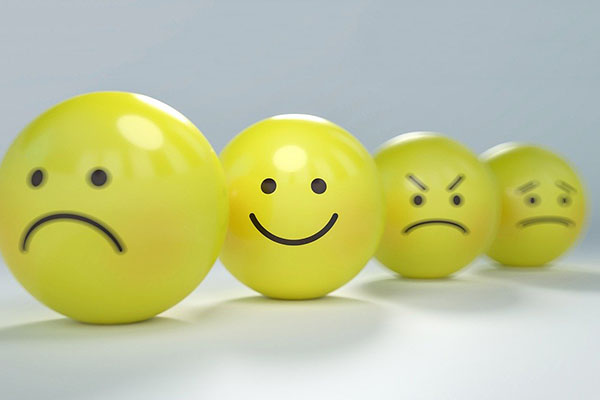
To add to that, when you’re designing a building and you talk about community, what part of the design informs building community? What are the elements that you include? What are the things for us to consider in the way we live our lives in our homes and our communities? What are things that help engage the community and bring it together?
When you’re designing new buildings, big apartments, identity is important. People having an identifiable front door, even if you share that front door with a lot of people. If you have the same as everybody else, you don’t have that sense of identity and belonging. Making sure that if you have a stair core, you have only a few people who could come off of that stair core. Lots of long corridors like hotel corridors with endless doors mean that you never bump into your neighbors. Opportunities to bump into people, you can engineer those. You can make places or spaces where people connect and that’s usually in stairwells or communal gardens. Making places where people can grow things together or play together.
In the UK, we went through a period of putting everybody in lifts to go up. You can create much more activity by making beautiful stairwells. Not stairwells that look like they’re the escape route in a fire but ones where you can connect with the outside that feel like they’re joyous and that you want to take the stairs. Communities are also about shared experiences. Making places that everybody feels that they need to contribute to is important. Having shared garden spaces, shared in Luckman spaces. Understanding that kids might want to play football but the older generation might not want to be that disturbed.
Having places and spaces that are flexible allows all those different things to happen. They are connected. Visual connectivity is important as well. Connecting with nature is something that everybody aspires to, having balconies that you can go out on and see people. In the UK, in London in particular, there’s a lot of people who live in big apartment buildings. Having that visual connection, that outdoor space, that ability to bump into your neighbor is something valuable. You can engineer if you like. You can design that into your buildings.
Thank you.
Sadie, you’ve been such an inspiration. Many of your accolades involve women and many firsts for women. You are quite an inspiration. Laura has a question for you regarding that.
One of the things I was struck by was your amazing leadership strategy of being heartfelt in the way you speak and share your stories about your journey in business and life. Your goal of having a gender-balanced workplace is amazing. How do you plan to inspire and mentor young women coming into the workforce in your field in 2020?
One of the first things you have to do is to show that leadership. You can’t talk about gender balance and have an office that is full of men. We have more women than men in our practice. We’ve made three new directors, which brings even the directorship up to 50/50 which is incredibly unusual. You’ll be finding a lot of women moving from graduation through. Few women are still making it to the directorship level. The first thing to do is to lead by example. The second thing in my architectural practice is to allow everybody to feel that they have something to contribute.
Whenever we pin up the work, we encourage everybody to speak, everybody from the intern to the director. If the intern has a good idea and generally they do, it’s the younger generation who are supercritical. They have fantastic ideas and you’re like, “Why didn’t I think about that?” It’s important to allow everybody to feel comfortable to speak and to challenge. We do that by encouraging people. We have a pin-up. We call it Pin-up on Friday night. We all have beers. Everybody lands to show their work. They pin up their work in front of the team. Pinning up in front of your team is the hardest thing to do.
Community is at the heart of everything and that makes the quality of life better. Share on XWe try to actively help people to not only feel confident in critiquing and asking questions but also explaining their work and doing so in a safe place. Making sure that when you go to meetings with important clients, you take people along with you so that they have that exposure. They understand that clients are human beings. Especially with young women, it’s confidence. We have the most extraordinary young women who are doing incredible things in our business. I take any opportunity. Lots of people write to me and say, “Can I speak to you? Can I come and see you?” If I can, I will always take the time to have a coffee or connect on the phone or even to email back and say, “I’m sorry. I’m busy.”
It’s important to be available. Being human, it’s about having that vulnerability. I often overshare. If I give a lecture and people ask me a question, I tell them everything they don’t need to know. If you show your humanity and you show that it’s not that easy or it’s as difficult or nothing’s perfect, particularly, it allows young women to see that there is a pathway and there is every opportunity. There’s nothing that should hold them back, particularly not themselves.
That’s extremely inspiring. That could be a model for all fields to make people feel included from the bottom up. That feeling of everyone’s human and taking away the fear of speaking in front of the client, that’s inspirational.
Camille has some questions. We all go through roadblocks. She’d like to ask you about that.
I love what you were mentioning about being transparent and sharing that humanitarian side of yourself and showing how you were able to overcome and maybe even overshare. Many women, whether young or later in their careers, end up going through roadblocks. You had a rather large one with going through cancer. Can you share a little bit about how we can help people going through those different things? What advice you would give for others as far as getting over those roadblocks?
Whenever anyone asks me about my cancer, I say, “If I stay alive.” I’m always touched when I say that. If I can stay alive, it’s the best thing that ever happened to me. When you go through life and you’re whacking and life takes over and suddenly you’re faced with your mortality, it does everything it says on the tin. You sit there and you think, “What matters to me?” It’s this extraordinary moment of reflection, I suppose. That’s exactly what happened to me. I took stock of my life. I decided that I needed to change my work-life balance. Now, I never work at weekends. I try hard to look after myself in a way that perhaps I wasn’t doing well.
I also wrote about it. I wrote several articles in magazines and papers. I didn’t realize how much of an effect that would have. Suddenly, it was on the front-page news of my industry news. It’s a story that few people admit to. Suddenly, I had loads of people write to me and say, “The same has happened to me. It’s amazing that you’re talking about it.” If there’s a lesson that I took out of it when I came out of my surgery, I’m changed as a woman. I have a breast that doesn’t belong to me. Although as I say to my children, “I now have teenage bosoms. They’re incredible.” They’re like, “Mom, please stop showing off your bosoms to everyone.” I’m like, “They’re incredible.”
You come out a changed person, physically and also mentally changed. For me, I probably went a bit over the top. I was eating up life. I climbed Kilimanjaro. I cycled halfway across the world. I did all these crazy things because I wanted to prove that I was alive and that I could do it. After that, I was quite tired. Suddenly, I thought, “If I carry on like this, I’d kill myself doing something silly.” I’ve calmed down a bit now. It’s not something I would wish on anybody. Also, it’s an experience that you have to learn from and you have to take the positives from it. The positives that I’ve taken from it is that I am happy to be alive. I love my life. I’m grateful for it. You can’t have that intensity of realization until you do think you’re going to die.
Thank you so much for sharing. That was great.
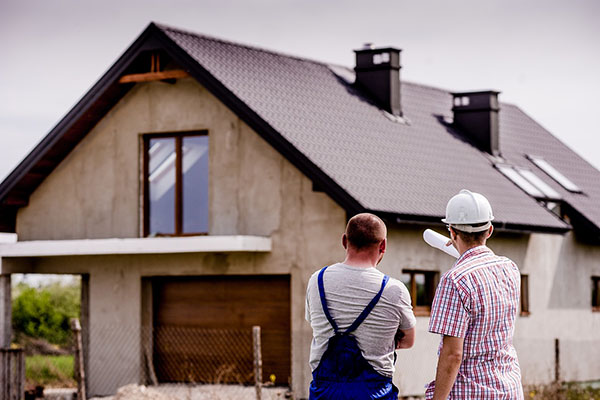
Joelle is going to piggyback off of that. I did mention to the group that you went to Burning Man. I started to tell them a little bit about your experience that you had shared with us. I’m not sure if you want to share it. Joelle has some questions about that.
In reading through some of the voluminous information about you that one or maybe the best piece of advice you’ve received is work hard, play hard. It sounds like Kilimanjaro and Burning Man are examples of that philosophy. I’m curious. We’ve heard a bit about the work hard play hard before your cancer diagnosis and after the cancer diagnosis. I’m curious about what work hard play hard means for you now after going through that intense period of reconfirming life and vitality. Now, it sounds like you’re in a place where maybe things have mellowed a bit. I’m curious what work hard play hard means to you now.
It came from a teacher that I had when I was at the Royal College of Art years ago. It was the best piece of advice. If you want to get the most out of your profession, you have to be happy. If you’re happy, you have to have a proper balance of work and life. Work hard, play hard has always meant to me that if an opportunity comes or somebody asked me to do something, I say yes. I’ve always encouraged myself to push myself out of my comfort zone and take on new experiences and take some risks.
What does it mean now? It means that I allow myself to take a time out. The Burning Man experience is quite an extraordinary thing to do. It teaches you many things. It teaches you not to judge other people, not to be judged. You have freedom over 4 or 5 days that you don’t experience in any other situation. If you embrace that way of being for a short time, it’s incredibly freeing. They have a parade where the women go do a topless cycle ride. There was a moment in time when everybody was asking if I would feel comfortable because of course, I don’t have a breast. I said yes, “Yes. Of course.”
In the camp that I was in, nobody wanted to do it for me. The camp that I’m in is run by a guy who puts on this incredible circus show. All the performers were there. There was this incredible young woman. She was 22 years old. She was a makeup artist and she painted my body. She was overcome as she was painting me. I said, “Is everything okay?” You’ll be embarrassed because some people might think it’s a bit unattractive. She said, “No. I’ve had a double mastectomy like you. I have the BRCA gene. I’m ashamed that I can’t ever show anybody and I’m amazed that you’re doing this.” Honestly, she painted the most beautiful decoration over my body. The whole of the camp came and cycled with me.
You’re doing it and you’re thinking, “I’m cycling topless. What am I doing?” It was the most incredible feeling of togetherness. There were thousands and thousands of women cycling around. We’re proud. They were all shapes and sizes and other women who’d had mastectomies. It was the most incredible experience. When you come to the end, they do a big arch. They let you through. There’s something reserved about the English. The Americans will say, “You’re wonderful.” You’re like, “Go, girl. You’re so amazing.” It was uplifting.
I went through this set of human hands. I was in tears. It was the first time that I’d ever exposed myself in a way that I felt comfortable and proud. It was an extraordinary experience. I’ve gone every other year since. The woman who painted me that first time, every single year, comes especially to paint me. In 2020, she came and she did herself as well. It was wonderful. These things aren’t for everybody. For me, it was an important moment in the journey of coming out a different person.
Thank you for sharing that.
Leaders lead by example and allow everybody to feel they have something to contribute and to speak their truth. Share on XThat’s such a beautiful story. That’s you when I met you and we went biking and you’re in the rain. I’m worried about my hair getting frizzy and you’re like, “Come on. Let’s go.”
We got wet.
It was fun and seeing your positive attitude towards it was inspiring. Not to turn the tables now but we have to address the pandemic. Alyssa has a question as to how it relates to architecture.
We’ve talked a lot about community. Not just community but the support we get from living and working amongst our various communities. You talked about the support that young interns and young architects get from being able to gather physically in the conference room at your firm. Even the support and the comfort that you get from living in more of a communal space in the stairwell or the community garden. I have to ask, what is the conversation in your industry, perhaps in your firm? What are your creative resources telling you about where we go from here in terms of spaces, building spaces both for work and for home? Do you see that changing? What are their profound changes on the horizon in the world of how and where we work and we live? I’m curious about what architects like yourself are thinking about.
I’ve been on many webinars where they’re like, “What is the future of retail space?” It’s a difficult one. In the short-term, if you’re where I am in London, the City of London where people come to work, it’s completely dead. The commercial is dead. Retail is dead. It’s having a profound effect on the center of our city. If you think about the way we live in our homes, I’ve been working from home. That has its challenges because you need to make sure that you can leave your work behind.
How do we make sure that if we are going to be working from home that we’re comfortable? We’re not sitting at the kitchen table or if we are, we make sure that when it comes to the evening that we move our work away. There are lots of small changes that we make. One of the big things that we’ve learned as a profession is how important green spaces and the spaces between buildings. We did lots of research that came back saying connection to greenery and connection to outdoor is important.
Our cities start to change. What’s happening in London, because there were no cars, the infrastructure is now changing. Nobody wants to get on the tube. No one wants to be in confined spaces. Everybody’s cycling. The cycle lanes are suddenly full. People are walking. People are thinking about interacting in our city differently. The outside becomes important. It’s not just the buildings that will change but it’s the public realm, the parks, the interstitial spaces that we need to start to think about. Also, making sure that we design our buildings with outdoor space.
I don’t know if you have Clap for Carers but every Thursday evening, we would go and clap. Everybody would come out of their houses and clap to show their appreciation for the support services. I’m lucky enough to live in a beautiful apartment. I have a terrace. I’m living in a city so I’m in an apartment building. I came out and I’m opposite on some social housing. Suddenly, you have tiny apartments and 7, 8, 9 people come out of them. At that point, they were locked down. They were inside, these small kids.
We have to start thinking about how we build our cities to allow families to have the space they need. If they don’t have space within their homes, we have to give them the space that they feel safe in and that they can connect with nature and they can grow food in. They can cycle around their bikes. They can play football or whatever it might be. We have to make our cities work much harder than they have in the past. We have to think about the long-term effects of people probably continuing to work from home. Not full-time but there’s going to be a shift between studio work and homework. That will have a profound effect on our cities and our homes.
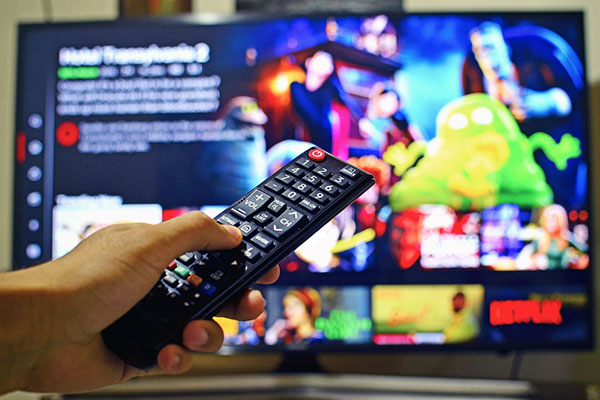
Here in Chicago, we were blessed to have a beautiful summer. People were outside every moment they could be. We’re hoping winter doesn’t hit us too hard for quite a while. We’re trying to stretch this summer-fall period as long as we can because we’re seeing how important it is. We’re all living and working in the same space, you need to get outside.
What’s happening is it’s proportionally affecting those people who are already not as lucky as many of us. The inequalities in society are coming out, the haves and have nots. It’s important that we appreciate what we have and we have the ability and space. As architects and people who are designing the environment, we must try to make it better for everybody. It’s a big lesson for me.
Here in Chicago, and I’m sure other states as well or countries, a lot of people don’t have internet. We’ve seen stories of families driving up outside restaurants and doing their homework in their cars. Even re-examining your space. The office that I’m in used to be a great storage room. Now we fight over it between my husband and I. We fight over this room. This always gets redecorated and pushed aside all my stuff for when my husband does his calls. It’s re-examining all the spaces that we have. Sadie, you have many accomplishments, nominations, and awards. If you could pick 1 or 2 of your biggest accomplishments or something that you’re proud of, what would you share with our readers?
I was awarded an OBE. I can’t pretend that’s not an unbelievable honor.
Can you tell us what that stands for?
It means you’re an Officer of the British Empire. It’s something that the Queen awards you.
Did you meet the Queen?
No, unfortunately, because of the lockdown. You go to the palace and it’s this extraordinary day. It probably isn’t the Queen but a member of the royal family gives you your medal. I haven’t managed it yet. Hopefully, I’ll still be able to get into the palace. That’s an extraordinary thing. The British, when they do things like this, they do it well. You have this incredible letter that comes from the Prime Minister that says, “The Prime Minister has told the Queen that he wants to give you the award.” I opened up in the lift. They sent this letter and I opened it up and I was in tears. Of course, you’re not allowed to tell anybody because it’s a big secret. They say, “You need to let us know if you’re going to accept.” You’ll think, “Of course I’m going to accept.” I told my mom and my loved ones. Otherwise, you’re not allowed to tell anybody. That was a huge honor.
If you show your humanity, it allows young women to see there is a pathway and opportunity, and nothing can hold you back. Share on XThe other ones that are important to me are probably those that are related to being a woman in the industry. I was given the inaugural Women Leader in Architecture a couple of years ago. They wrote this lovely thing about me that said, “She would’ve gotten this award anyway, regardless of the fact that she was a woman.” That was special. You reflect on these things. Often people say, “We shouldn’t be in a place where you have to be rewarded. You shouldn’t get something because you’re a woman.” It’s still important to say, “It’s quite hard.” It’s still quite hard to achieve things and be a woman in this industry. I’m sure it’s the same in many industries.
Maybe one day, we won’t have to say or point out the fact that I am a woman. The things that I do well, regardless of whether or not I’m a woman, is important and it means a lot. It meant a lot to the girls in the office. You realize then it’s important to be proud of your achievements. When we started the conversation, it takes a while to think, “You believe me?” Being grateful when people recognize something in you is important. It’s important to say thank you. I have a lovely Swedish friend. The thing about the Swedes is if anyone says, “You look lovely.” They’ll go, “No,” or like, “Isn’t our dress lovely?” I’m the same, I’m like, “I bought it in the sale.” She said, “Sadie, the thing you have to learn to do is accept. If somebody says something nice to you, accept it and say thank you.” That’s a good lesson. I’m trying to do that now.
I love that. A lot of times, people say things. I don’t know if it’s a female thing or what. We’re like, “No.” I do the same thing. “I got it in a sale. It’s nothing. It’s not a big deal. I didn’t work that hard.” If our readers would like to find out more about you, contact you, perhaps apply for a position, how can they do that?
All they have to do is email me. My email is Sadie@DRMM.co.uk. Write to me.
If you’re reading and you’re applying for a position, she doesn’t want to read through a stack of things. She wants to know something that you are passionate about.
It’s true. I gave a job to this incredible French woman and I said, “I don’t look at people’s CVs. I go straight to the back row that says your personal thing.” She was a motorbike mechanic and a good cook. I’m like, “You are fantastic.”
We love talking with you. It’s obvious your passion, your soul for building, your soul for creating, for risk-taking, resilience, and gratitude. That is exactly what Grateful Goddesses all like to hear to help inspire us to move forward. I can’t wait until we can ride again together, whether be here in the United States or in London. Even if it’s a rainy day, we’re going to have a smile on our faces.
It’s always raining in London as always.
Thank you for joining us on Grateful Goddesses.
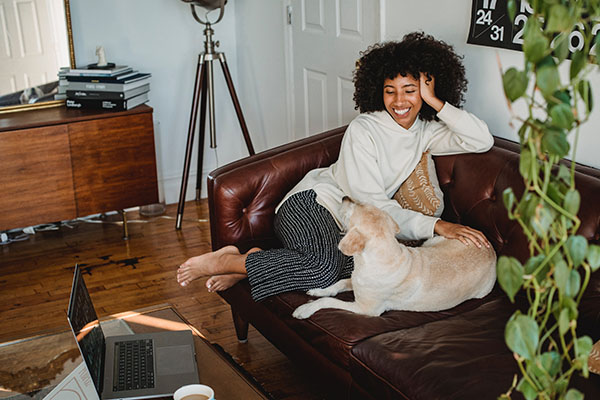
It’s a pleasure. Thank you so much for having me. Thank you.
—
Welcome to the Favorite Things portion of Grateful Goddesses with our guest, Sadie Morgan. We are going to start with me. My favorite thing is I brought this basket that goes on my bike. I brought it because I love riding my bike, especially on the lake here in Chicago. A fond memory was riding in London with Sadie. I love the feeling of being free and having the wind while I wear my helmet to be safe. It feels great to go riding. I love my basket because it reminds me of The Wizard of Oz. I’m not the witch. I’m Dorothy on her little bike with the basket. We’re going to pop over to Rachel and see what her favorite thing is.
Sadie, with our talk of urban spaces, we live in the city of Chicago. I live in a neighborhood called Andersonville. It’s an old Swedish neighborhood. I love where I live. I know many of the store owners. We don’t have a backyard but we have a back deck. If I look out, I can see the apartments around me and my neighbors. It’s socioeconomically diverse and sexual orientation diverse. All ethnicities and languages are spoken. I feel lucky to be in this type of environment. Sadie, you talk a lot about diversity and the diversity of the environment. I feel lucky to live in a neighborhood like that.
Thank you for sharing. Alyssa?
As Karen said at the beginning of the episode, much of our connection to the world comes through our television. I have been in a small group of friends where all we do is trade book recommendations, TV recommendations. We have this list going. I’m going to throw out three binge-watchable series that are great and completely different. Hopefully, one of these will speak to everybody. The first one I’m going to recommend is Ted Lasso, starring Jason Sudeikis. He’s hysterically funny, smart, witty. It takes place in London. He is a Division II American football coach that goes to coach a Premier League in London. It’s smart and it’s the most heartwarming thing. It puts a smile on your face for however many episodes. That’s on Apple TV.
Number two, because we can’t travel the world, I’m going to recommend Emily in Paris. It stars Lily Collins, Phil Collins’ daughter. I’m going to call it Sex and the City meets The Devil Wears Prada. It is on Netflix. It’s this love story to the city of Paris. I love it. The show itself is light and not deep but it’s a great travelogue of Paris. Lastly, a different show called Tehran, which is either written by the creator of or created by one of the writers of an Israeli series called Fauda. This is about a woman who was born in Iran but raised in Israel. She’s a Mossad agent and gets trapped in Tehran. It’s an edge-of-the-seat gripping series. I’m going to throw those all out there. I enjoyed all three of those. It certainly makes these long evenings when we can’t go out and do anything much better.
Now you’ve told me those three, I’ll probably be done with them. Camille, how about you?
One of the shows that I was watching when we had our meet was the Ted Lasso show. That was a show I was watching while we were talking. It was interesting because we had to do a Q&A and stuff. That’s funny. Oddly enough, my favorite thing that I’m bringing is my SAG-AFTRA card. I live in North Carolina and it’s not known for its film and art community but because of the lockdown and all this, I’m able to attend all these different classes free through my union. I’m able to do the Ted Lasso Q&A. I get these classes with people and expand my education to try to figure out what I can do now that there are more opportunities. I don’t have to limit myself based on location like with working with you wonderful ladies. That’s one of my favorite things.
We love to have you.
Work hard and play hard! Share on XIt’s my new passport.
Joelle?
Working from home and doing the work that I do from home as a therapist working over the computer and holding space for people can be intense work. It sounds corny but they’re pictures of my kids. I have particular ones that I have spaced out around my desk in my workspace because it keeps me grounded. It reminds me to come back to myself. When I have long days, it allows me to keep on coming back to my center and my core and something true for me. I didn’t bring them to show you. I feel like that’s something that’s getting me through.
Lara?
I brought a new cookbook that I bought. One of my friends texted me the same thing during this time and said, “Do you have this cookbook, Mandy’s? It’s all about new salads.” I was thinking, “I cannot learn a new thing about a salad.” I thought I knew it all. On the back of the cookbook, which is a stunning cookbook, I’ve been getting lots of new recipes online. I rarely buy a cookbook anymore, but look how beautiful it is. It says on the back, “There’s nothing a Mandy salad can’t fix.” I agree. My family is over the moon with these new salad dressings. I can put the dressing on the lettuce and add a couple of sunflower seeds and shaved parmesan and everybody is moaning as they eat this salad. I highly recommend it.
The story of Mandy’s Restaurant is fascinating. They’re two sisters from Montreal in Canada. One of the sisters was into making salads and dressings. She was selling them out of a clothing store that her boyfriend owned. They ended up going into business together, the two sisters. They had many locations in Montreal and they were supposed to open up in Toronto but because of everything, it’s on hold. I highly recommend it. I ordered it on Amazon.
I ordered one too, by the way, because another sister-in-law told me. I felt the same way, how many more salads can we make? She said it was great. I can’t wait to get it. Last but not least, our guest, Sadie Morgan. I can’t wait to hear what your favorite thing is.
I’m like, “I could cook a salad.” I’m excited to buy that book.
The house dressing is amazing. Order some plastic salad dressing shakers on Amazon.
When an opportunity comes to you, say yes, push yourself out of your comfort zone, and take risks. Share on XMaybe you could copy that and send it to all of us and we’ll send it to Sadie.
I’m feeling like suddenly, my life might change. I brought two things, one is practical and one is meaningful. This is a picture of me and my father. I take this everywhere. This is when I graduated from the Royal College of Art. He suddenly died soon after that very suddenly. I miss him loads. I’m grateful to have had him in my life. He taught me a lot. It’s faded. I’m worried one day he’ll disappear. He’ll always be there in my heart. The next thing is a notebook and this is my big recommendation. I’m not organized.
That’s surprising. You seem like you are. Your home is clean and organized.
I’m not organized. Whenever I have New Year’s resolutions, it’s like, “I’m going to have a notebook and I’m going to write all the things I need to do.” I’ve always had notebooks that I’ve never written in them. I bought the most expensive notebook in the whole world. It’s leather-bound. It’s got this beautiful gold clip on it. It’s unbelievably, eye-watering expensive that I have to write in it and I have to fill it up. Otherwise, it would be wasteful. It’s been brilliant. I write everything. Whenever I have meetings or whenever I’m working, I write notes and then I go back to them. I often have extraordinary conversations and I’m able to go back and read over them or remind myself of something that I’d done the week before. Sometimes I make little sketches in it. This was my big lockdown discovery, which is my notebook. It’s the best investment I made.
It’s beautiful. Maybe you’ll add the salad dressing recipe to it.
I’m going to make some notes.
Rachel has mentioned before that she loves those stationery stores, journal stores, and all of that. What is that particular one called so we can look it up and see how much it costs?
This is the Smythson. It’s an old-fashioned English brand.
It’s okay. There’s no judgment. It’s great to treat yourself like that. If that makes you happy, if it costs as much as a dinner out, it’s worth it. If it costs as much as a car, no.
It’s not that bad. I would rarely do something like that because I’ve tried and failed so many times and I thought if it was special, then I would take care of it.
Thank you so much for sharing. Rachel had given me and a few of us these little field notes with You Are Beautiful stickers. Any type of journal is great to record. Our guest, Elaine Soloway, wrote in her journal that she keeps looking back and seeing what she did on that particular day. It’s cool to do. Thank you for sharing your favorite things with us, Sadie. Thank you for joining us on Grateful Goddesses.
It’s a pleasure.
Important Links:
- Sadie Morgan – LinkedIn
- Sadie@DRMM.co.uk
- Mandy’s
- Elaine Soloway – Past episode
About Sadie Morgan

Sadie Morgan is a founding director of dRMM, whose work includes the Stirling Prize-winning Hastings Pier. She also sits on the National Infrastructure Commission and the Homes England board, chairs the Independent Design Panel for High Speed Two and is a non-executive director of developer U+I. She recently founded the Quality of Life Foundation, which aims to make wellbeing central to the way we create and care for our homes and communities.
Sadie lectures internationally on the work of dRMM and the importance of infrastructure which connects back to people and place. In 2013 she became the youngest president of the Architectural Association, and in 2016 she was appointed professor at the University of Westminster and awarded an honorary doctorate from London South Bank University. In 2017, she was named New Londoner of the Year by the NLA for her work championing the importance of design at the highest political level and most recently she won ‘Female Architectural Leader of the Year’ at the BD awards and AJ100 Contribution to the Profession. In 2019 she was awarded a fellowship of the Royal Institute of British Architects.
Sadie is highly active within the architecture industry, both in business and extra-curricular activity. She sailed with the winning Great British team in the Commodores’ Cup 2012, cycled over 5000km raising money for Corum, and climbed Mount Kilimanjaro to support The Railway Children organization in 2017.
In the New Years Honours 2020, she was awarded an OBE by the Queen for services to design advocacy in the built environment.
Winner of the 2017 Stirling Prize
Love the show? Subscribe, rate, review, and share!
